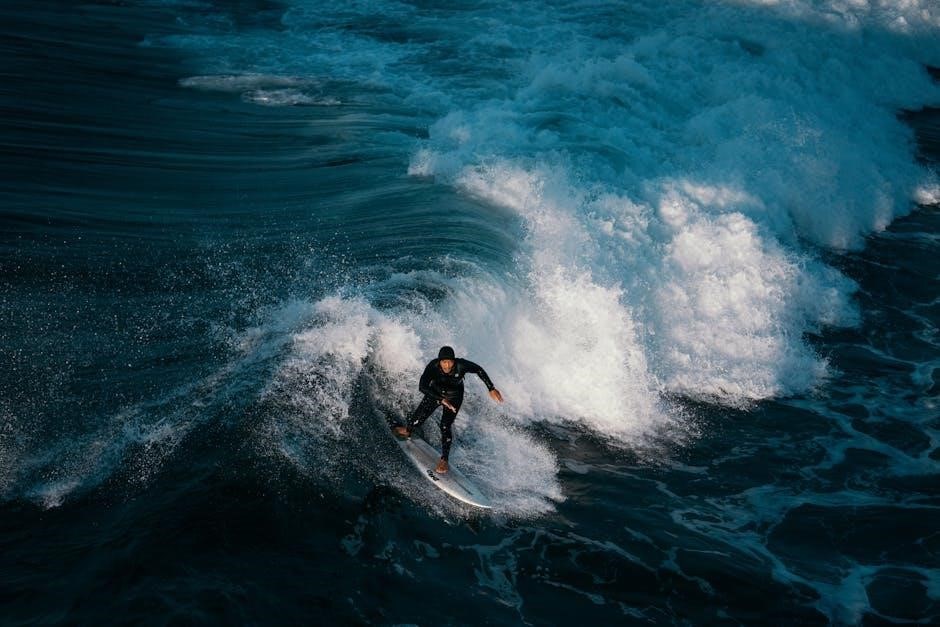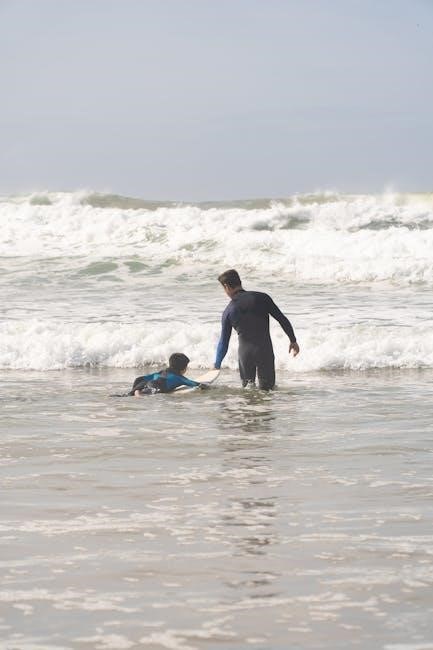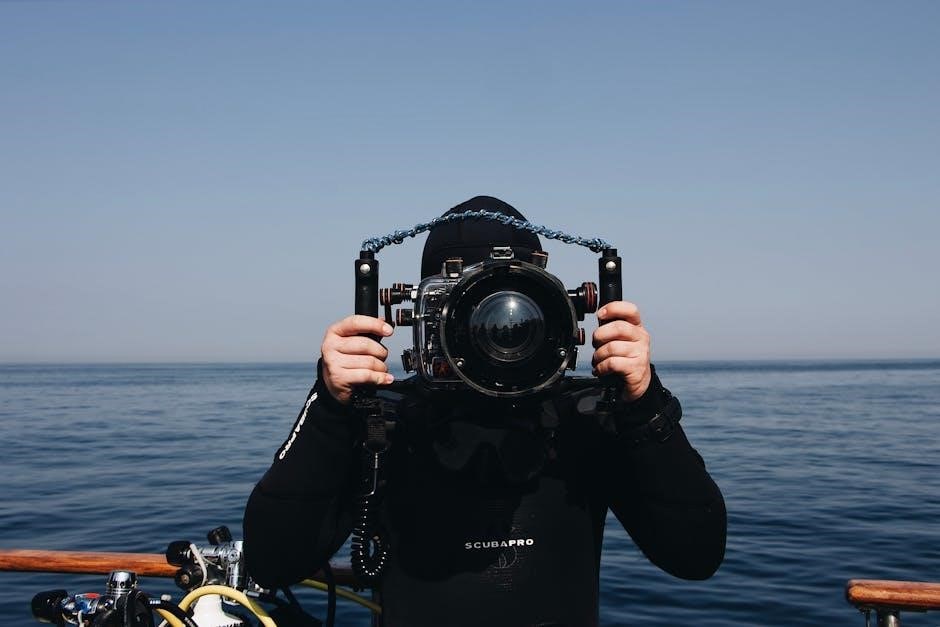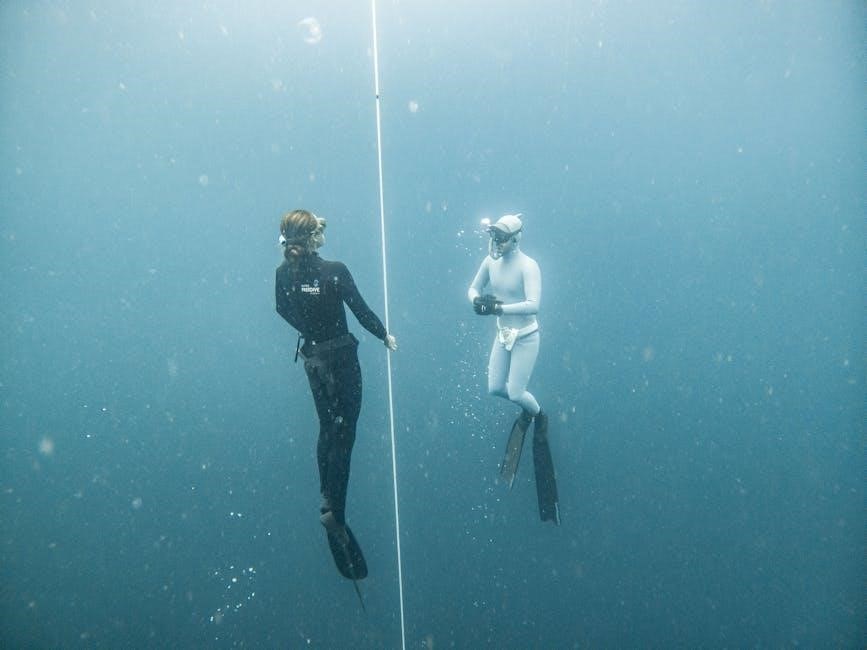Wetsuits are essential for water activities, offering thermal protection. This guide helps you navigate the selection process, ensuring you choose the perfect wetsuit. We cover everything from thickness and materials to fit and maintenance, so you can enjoy the water longer.
Wetsuits are indispensable gear for anyone venturing into watersports, acting as a crucial barrier against the cold. They allow enthusiasts to extend their time in the water, whether surfing, diving, or engaging in other aquatic activities. Understanding the basics of wetsuits is key to selecting the right one for your needs.
The primary function of a wetsuit is to trap a thin layer of water between the neoprene and your skin. Your body warms this water, creating a comfortable thermal barrier. The effectiveness of this barrier depends on several factors, including the thickness of the neoprene and how well the suit fits. A snug fit is essential to minimize water flushing, which can disrupt the warming process.
This guide aims to provide comprehensive information on wetsuits, covering various aspects such as materials, construction, thickness, and fit. By understanding these elements, you can make an informed decision and choose a wetsuit that offers optimal warmth, flexibility, and durability for your specific water activities. Selecting the right wetsuit ensures a more enjoyable and safer experience in the water.
Understanding Wetsuit Thickness
Wetsuit thickness is a critical factor determining the suit’s ability to insulate and maintain body temperature in varying water conditions. Neoprene thickness is typically indicated by two numbers separated by a slash, such as 3/2mm or 5/4mm. The first number represents the thickness of the neoprene in the torso area, while the second number indicates the thickness in the arms and legs;
The torso generally requires thicker neoprene for optimal warmth, as it houses vital organs. Thinner neoprene in the extremities allows for greater flexibility and range of motion, crucial for activities like surfing or swimming. Understanding these variations is essential when selecting a wetsuit for specific water temperatures and activities.

Different thicknesses cater to different water temperatures. Thicker wetsuits, such as 5/4mm or 6/5mm, are designed for colder waters, providing maximum insulation. Thinner suits, like 3/2mm, are suitable for warmer conditions, offering flexibility while still providing some thermal protection. The ideal thickness depends on the water temperature you’ll be encountering, as well as your personal tolerance to cold. Choosing the right thickness ensures comfort and prevents hypothermia during prolonged water exposure.
Wetsuit Thickness and Water Temperature Guide
Selecting the appropriate wetsuit thickness hinges significantly on the water temperature you’ll be encountering. This guide offers a general overview, but personal preferences and activity levels can influence your ideal choice; For water temperatures above 70°F (21°C), a rash guard or a 2mm wetsuit may suffice, primarily offering protection from the sun and minor abrasions.
In water temperatures ranging from 62°F to 70°F (17°C to 21°C), a 3/2mm wetsuit is generally recommended. This thickness provides a good balance of warmth and flexibility for activities like surfing, swimming, and diving. When water temperatures drop to between 52°F and 62°F (11°C to 17°C), a 4/3mm wetsuit becomes more suitable, offering increased insulation for extended periods in the water.
For colder waters, below 52°F (11°C), a 5/4mm or even a 6/5mm wetsuit is necessary. These thicker suits provide maximum warmth, often incorporating features like a hood, gloves, and booties to protect extremities. Remember to consider factors like wind chill and the duration of your activity when making your decision. This guide is a starting point to ensure you stay comfortable and safe.
Key Attributes: Warmth, Flexibility, Durability, and Fit
When selecting a wetsuit, four key attributes should be carefully considered: warmth, flexibility, durability, and fit. Warmth is paramount for maintaining comfort and preventing hypothermia in colder waters. The wetsuit’s thickness and the quality of the neoprene directly impact its thermal insulation. Flexibility is crucial for unrestricted movement, allowing you to perform water sports with ease. A more flexible wetsuit enhances your paddling, swimming, or diving experience.
Durability determines how long your wetsuit will withstand wear and tear. Reinforced seams, high-quality materials, and proper care contribute to a wetsuit’s longevity. A durable wetsuit will resist abrasions, tears, and degradation from sun exposure and saltwater. Finally, fit is essential for both comfort and performance. A snug fit minimizes water flushing, which can quickly cool you down, while also maximizing flexibility.
A wetsuit that’s too loose will allow water to enter, reducing its warmth, while one that’s too tight will restrict movement and cause discomfort. Finding the right balance of these four attributes will ensure you choose a wetsuit that meets your specific needs and provides optimal performance in the water.
Types of Wetsuits
Wetsuits come in various styles, each designed to suit different water temperatures and activities. Full suits offer complete coverage, ideal for colder waters, providing insulation from neck to ankles. Shorty wetsuits, also known as spring suits, cover the torso and upper legs, suitable for warmer conditions where mobility is key.
Farmer John/Jane wetsuits consist of sleeveless, high-waisted trousers, often paired with a separate jacket, offering versatility for changing conditions. Wetsuit tops, or jackets, provide core warmth and can be worn alone in mild weather or layered under a full suit for added insulation. Wetsuit bottoms, such as leggings or shorts, offer flexibility and warmth for legs.
Each type caters to specific needs, ensuring you stay comfortable and protected in various aquatic environments. The choice depends on water temperature, activity level, and personal preference. Considering these factors will help you select the most suitable wetsuit type for your water adventures, maximizing enjoyment and safety.
Full Suits: Thickness Variations (3/2mm, 4/3mm, 5/4mm, 6/5mm)
Full wetsuits provide complete body coverage, offering varying levels of insulation based on neoprene thickness. The notation (e.g., 3/2mm) indicates different thicknesses in different areas of the suit. A 3/2mm wetsuit typically has 3mm thick neoprene in the torso for warmth and 2mm thick neoprene in the arms and legs for flexibility.
4/3mm suits offer more warmth, suitable for colder waters, with 4mm neoprene in the torso. 5/4mm wetsuits provide substantial insulation for very cold conditions, featuring 5mm neoprene in the core areas. 6/5mm suits are designed for extreme cold, maximizing warmth with thicker neoprene throughout.
The choice depends on water temperature and personal cold tolerance. Thicker suits offer greater warmth but may slightly reduce flexibility. Consider the typical water conditions of your activity to select the appropriate thickness. Balancing warmth and flexibility ensures comfort and performance in the water, allowing for longer sessions and greater enjoyment.
How to Choose the Right Wetsuit
Selecting the right wetsuit involves considering several key factors to ensure optimal performance and comfort. First, determine the primary water temperature you’ll be encountering. This will guide your choice of neoprene thickness, with thicker suits for colder waters and thinner suits for warmer conditions.
Next, evaluate the type of activity you’ll be engaging in. Surfing, diving, and swimming each have different demands on flexibility and range of motion, influencing the suit’s design and panel construction. Consider the suit’s features, such as seam construction (flatlock, glued, or blindstitched), which affects durability and water sealing;
Finally, prioritize fit. A snug fit is crucial to minimize water flushing and maximize warmth. Consult sizing charts and take accurate measurements of your waist, torso, and chest. Remember that neoprene stretches slightly when wet, so a slightly snug fit is preferable. Balancing these factors will help you choose a wetsuit that meets your specific needs and enhances your water experience.
Wetsuit Fit: Ensuring a Snug Fit
Achieving a proper wetsuit fit is paramount for maximizing its thermal efficiency and overall performance in the water. A wetsuit should fit snugly against your skin, acting as a second skin to trap a thin layer of water that your body warms up, providing insulation. However, a wetsuit that is too tight can restrict movement and cause discomfort, while one that is too loose will allow excessive water flushing, negating its warming capabilities.
To ensure a snug fit, pay close attention to the wetsuit’s sizing chart and compare it to your body measurements. When trying on a wetsuit, ensure there are no significant gaps or folds in the neoprene, particularly around the neck, shoulders, and torso. The suit should feel comfortable and allow for a full range of motion without excessive restriction.

Remember that neoprene will stretch slightly when wet, so a slightly snug fit when dry is ideal. If you are unsure about sizing, it is always best to err on the side of a slightly tighter fit.
Importance of a Proper Fit to Prevent Flushing
The primary function of a wetsuit is to keep you warm in cool water, and a proper fit is absolutely crucial to achieving this goal. One of the biggest enemies of a wetsuit’s warming capability is “flushing,” which occurs when cold water enters the suit and replaces the layer of warm water that your body has heated. Flushing dramatically reduces the wetsuit’s effectiveness and can quickly lead to discomfort and hypothermia.

A wetsuit that fits snugly around the neck, wrists, and ankles creates a seal that minimizes water entry. Gaps in these areas allow cold water to rush in, displacing the warm water and forcing your body to expend more energy to maintain its core temperature. This is why it’s so important to choose a wetsuit that fits well and is appropriate for the water temperature you’ll be in.
By ensuring a snug fit, you can minimize flushing and maximize the wetsuit’s ability to keep you warm and comfortable in the water. This allows you to enjoy your water activities for longer periods.
Wetsuit Sizing Guide
Choosing the right size wetsuit is paramount for comfort, performance, and warmth. A wetsuit that’s too large will allow water to flush through, negating its insulating properties, while one that’s too small will restrict movement and be uncomfortable to wear. A wetsuit sizing guide is an essential tool in finding the perfect fit.
Wetsuit manufacturers typically provide sizing charts based on height and weight. These charts serve as a starting point, but it’s important to remember that body shapes vary, and a wetsuit that fits one person perfectly might not fit another, even if they have similar height and weight.
When consulting a sizing guide, pay close attention to the specific brand you’re considering. Sizing can vary between brands, so relying on a generic chart may lead to an incorrect fit. Always refer to the manufacturer’s sizing chart for the most accurate recommendation. If possible, try on wetsuits from different brands to find the one that best suits your body shape.
Remember that wetsuits should fit snugly but not restrict movement.

Taking Measurements: Waist, Torso, etc.

Accurate measurements are crucial for selecting the correct wetsuit size. While height and weight provide a general guideline, specific measurements like waist circumference and torso length offer a more precise fit. Taking these measurements ensures the wetsuit conforms closely to your body, maximizing warmth and flexibility.
To measure your waist, stand naturally and use a flexible measuring tape to measure around the narrowest part of your torso, typically just above your belly button. Ensure the tape is snug but not constricting. Keep the tape level all the way around your body for an accurate reading.
Torso length is another critical measurement. Start by standing with your back against a wall; Place the end of the measuring tape at your crotch and extend it up to your collarbone. This measurement determines the overall length of the wetsuit and helps prevent it from being too short or too long.
In addition to waist and torso measurements, chest circumference can also be helpful, especially for women. Measure around the fullest part of your chest, keeping the tape level. Compare your measurements to the manufacturer’s sizing chart to find the wetsuit size that corresponds most closely to your dimensions.
Wetsuit Materials and Construction
Neoprene is the primary material used in wetsuit construction, prized for its excellent insulation and flexibility. It consists of tiny, closed cells filled with nitrogen gas, which traps heat and provides buoyancy. Different types of neoprene exist, including standard neoprene, super-stretch neoprene, and environmentally friendly alternatives like limestone-based neoprene.
Super-stretch neoprene offers enhanced flexibility, allowing for a greater range of motion and improved comfort. Limestone-based neoprene is a more sustainable option, as it’s derived from limestone rather than petroleum. The choice of neoprene affects the wetsuit’s overall performance and environmental impact.
Wetsuit construction involves several key techniques. Seams are typically glued and blind-stitched, creating a watertight seal that minimizes water entry. Blind-stitching means the needle doesn’t fully penetrate the neoprene, preventing leaks. Some wetsuits feature taped seams for added durability and water resistance, especially in high-stress areas.

The inner lining of a wetsuit also contributes to its warmth and comfort. Materials like fleece or plush linings provide additional insulation and a soft feel against the skin. Smoothskin panels, often found on the chest and back, offer wind resistance and quick-drying properties.
Caring for Your Wetsuit
Proper care is essential to extend the life of your wetsuit and maintain its performance. After each use, rinse your wetsuit thoroughly with fresh, cold water to remove salt, sand, and other debris. Saltwater can degrade neoprene over time, so this step is crucial.
Avoid using harsh detergents or bleach, as these can damage the neoprene and stitching. Instead, use a wetsuit-specific shampoo or a mild soap. Gently wash the inside and outside of the wetsuit, paying attention to areas that come into contact with your skin.
Hang your wetsuit to dry in a shaded area away from direct sunlight. UV rays can cause the neoprene to break down and become brittle. Turn the wetsuit inside out to allow the inside to dry completely. Once the inside is dry, turn it right-side out to dry the outside.
Store your wetsuit in a cool, dry place on a wide hanger to prevent creases and compression. Avoid folding or stuffing it into a bag, as this can damage the neoprene. Periodically check your wetsuit for any signs of wear and tear, such as tears or loose stitching. Repair any damage promptly to prevent it from worsening.
Wetsuit Stretching and Considerations

Neoprene wetsuits naturally stretch over time, especially with frequent use. This stretching can affect the fit and performance of your wetsuit, potentially reducing its thermal insulation and allowing more water to flush through. Understanding the extent of stretching and how to mitigate its effects is important for maintaining your wetsuit’s effectiveness.
When purchasing a wetsuit, remember that neoprene can stretch by approximately 5-10% once it’s wet and worn in. Therefore, a snug fit when dry is desirable, as the wetsuit will likely become more comfortable and flexible in the water. Avoid selecting a wetsuit that feels too loose initially, as it may become excessively large after stretching.

Consider the type of neoprene used in your wetsuit. Higher-quality neoprene tends to retain its shape better and resist stretching compared to lower-quality materials. Also, reinforced seams and panels can help prevent excessive stretching in high-stress areas.

Proper care can minimize stretching. Avoid over-stretching the wetsuit when putting it on or taking it off. Store it properly on a wide hanger to prevent creases and distortion. Regularly inspect your wetsuit for signs of wear and tear, and address any issues promptly to prevent further stretching or damage.